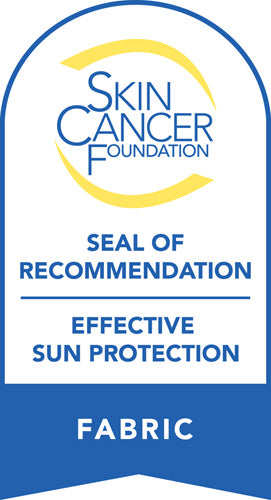How Can I Protect My Child From The Sun's Harmful UV Rays?
Many of your child’s favorite activities occur outside, specifically out in the sun.
This includes swimming, visiting the beach, and playing in the playground in the park. Depending on where you live, the sun’s rays can damage your child’s skin every single day — even when you’re not spending hours in the sun.
The sun is more dangerous for your child than you think. Most skin cancer cases are caused by the sun’s harmful UV rays. And every sunburn your child receives puts them at a greater risk of developing skin cancer, even at a young age.
Are you wondering, how can I protect my child from the sun? Here are sun protection practices to use every day.
Wear Protective Clothing
The textile industry is advancing every year. Now, children’s clothing with UV protection is available.
These clothing options have different aspects of protection, such as:
- Full coverage (concealing the arms, legs, neck, etc.)
- Sun protective ratings (either SPF or UPF)
- Sturdy fabric construction (such as flat seams)
The best UV protected clothing brands are tested to ensure they’re effective. Look for testing done by trusted organizations such as the American Association of Textile Chemist and Colorist (AATCC).
There are also additional best practices when selecting UV protective clothing. While there are multiple color options you can choose, it’s best to choose dark colors. Darker colors protect your child more than lighter colors.
Stay in the Shade
Stay in the shade as much as possible. This helps prevent UV ray exposure, sunburns, and other issues associated with sun exposure.
If you’re outside with your children, such as at the beach or the park, find shaded areas and instruct your children to play there. Great examples include under an umbrella or under a tree.
This is especially important if you’re out midday. This includes the times between 10 A.M. and 4 P.M. You should stay indoors during this time. If you have to be outside for long periods of time, try to stay in the shade as much as possible.
Wear Sunglasses
The sun doesn’t only damage your child’s skin. The sun can damage their eyes. Too much UV exposure on the eyes can cause cataracts later.
When buying sunglasses for your children, find sunglasses with broad-spectrum lenses. Broad-spectrum means protection against UVA and UVB rays. The best sunglasses offer 100% protection from both UV rays.
To ensure your child’s eyes are fully protected, find sunglasses that wrap around the head. This prevents any openings in the sunglasses that can cause UV rays to slip into their range of vision.
Wear a Hat
In addition to wearing sunglasses, you should instruct your children to wear wide-brimmed hats. The hat will protect their eyes but will also protect their scalp, face, neck, and ears.
There are many hat options you can choose from and each offer different levels of protection. Baseball caps are the most popular option for children. However, they don’t offer the most protection; baseball caps only shield the neck and ears.
Find sun hats made for kids. These hats have wide brims throughout the circumference, protecting the face and neck. Find a hat in a material such as cotton or a material with UV protection.
Beige mesh hats are popular options but choose solid material and dark-colored hats.
Wear Sunscreen
Applying sunscreen is one of the most important sun protection methods. You should apply sunscreen to your child every time they’re outside during the daytime — even if they’re only outside briefly.
Use a broad-spectrum sunscreen of at least SPF 15.
Both UVA and UVB rays impact the skin differently; however, they both cause skin effects and skin cancer. Apply sunscreen at least 30 minutes before your child leaves the house.
Apply the sunscreen everywhere the child’s skin is exposed.
However, most people forget to protect small areas. This includes the nose, ears, tops of hands and feet, and the lips (there are specialty lip balms made with SPF to use instead).
If your child will be outside for long periods of time, apply sunscreen every two hours. In addition, you should reapply sunscreen each time they sweat, swim, or towel off.
What If Your Child Is Less Than Six Months Old?
If your child is an infant, at six months old or less, exercise more protection and caution. Always dress your child in protective clothing and a wide-brimmed hat. Keep your infant in the shade as much as possible.
It’s best to find a sunscreen suitable for babies. Only use a broad-spectrum sunscreen with an SPF rating of 15 or more.
Encourage and Educate Your Child
Protecting your child while they’re young is key. But you should also educate your child and explain why the sun’s UV rays are harmful and why protection is important.
You should also exercise sun protection, yourself. Start by wearing UV protective clothing. Most brands make UV protected clothing for men and for women as well as children.
You should also limit your time in the sun or stay in the shade with your children.
If you need to be out in the sun, wear a wide-brimmed hat and apply sunscreen on yourself in front of your children. This way, they can see you also take measures to protect yourself from UV rays.
Stay Out of the Sun
Overall, the best course of action is to stay out of the sun. There are plenty of fun activities you can do with your child while you’re indoors. If your child wants to go outside, try and avoid the peak hours where the sun is at its strongest.
I Want to Protect My Child From the Sun: Start With UV-Protected Clothing
Are you thinking, I want to protect my child from the sun? We’re your one-stop shop for UV protected clothing. We sell clothing for men, women, and children. Shop with us today.



